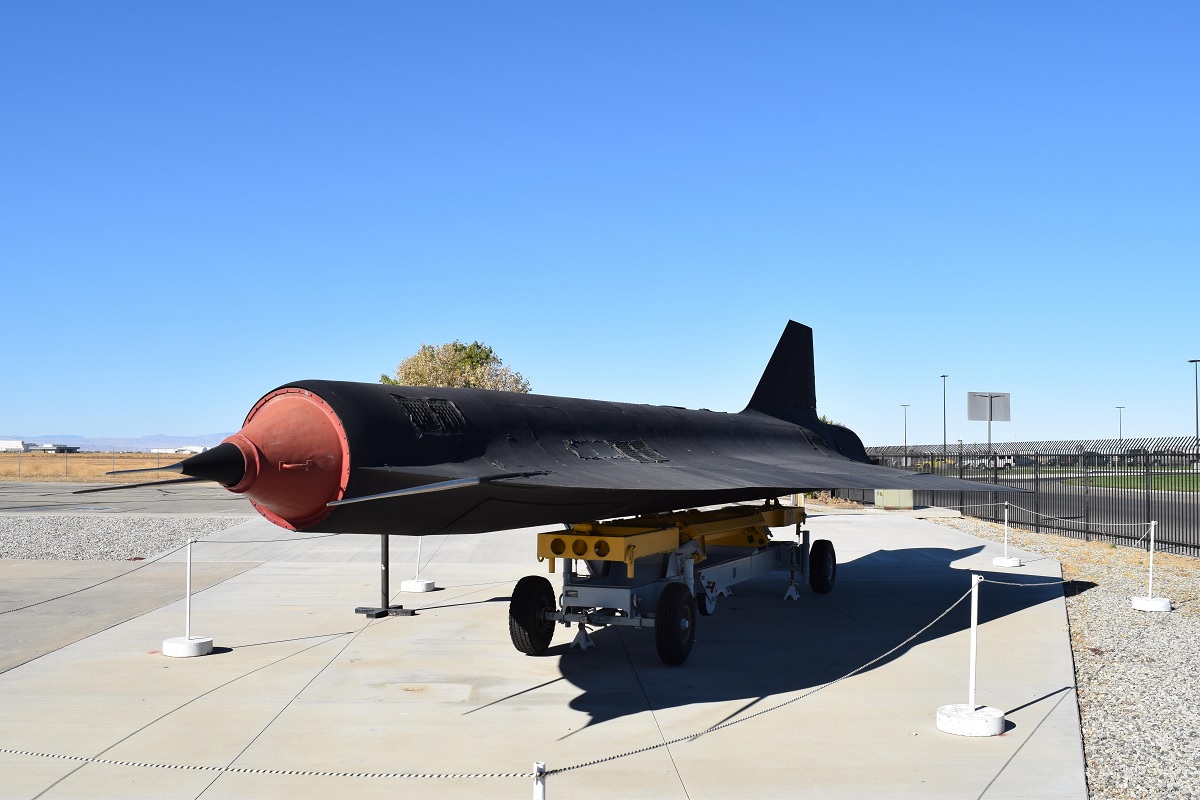B-52 #60-0036, one of the two B-52H bombers that launched the D-21 drone as part of Project Senior Bowl, with the nose art
The 412th Test Wing at Edwards Air Force Base (AFB) commissioned renowned aviation artist Mike Machat to create nose art to celebrate the 50th anniversary of the Lockheed D-21 supersonic reconnaissance drone.
The bomber, one of two B-52Hs used in Project Senior Bowl, was mounted on B-52 #60-0036.
According to Kenji Thuloweit, 412th Test Wing Public Affairs, the B-52 was employed in a top-secret test program called Tagboard roughly 50 years ago, as stated in the article Nose art pays tribute to B-52’s top secret past. The D-21, a Mach 3 ramjet-powered surveillance drone, was to be tested as part of the program, which has since been declassified.

According to Master Sgt. David Peralta, superintendent of the Bomber Aircraft Maintenance Unit of the 912th Aircraft Maintenance Squadron, the new nose painting is a reapplication of the original artwork, which was later painted over after standard maintenance.
“Lt. Col. Middleton (419th FLTS commander) brought the original artwork on the nose of aircraft 0036 to the maintenance unit’s attention,” said Peralta. “Since we had recently gone through the process of getting approval and the painting completed on the B-1 to honor Desert High School, our AMU sought approval to restore the original artwork from the 60s and 70s because of its historical significance.”
President Dwight Eisenhower banned all manned flights over the Soviet Union after Francis Gary Powers’s U-2 espionage plane was shot down on May 1, 1960, according to documentation from the Air Force Test Center History Office. Even though the United States government intended to use satellites for reconnaissance, the technology wasn’t ready yet. The Central Intelligence Agency, therefore, concluded that unmanned drones could cover the gap until satellites became a feasible option.
Due to its ramjet engine, which needed to be air-launched at a specific speed to ignite, the D-21 required a mothership to launch. The D-21 drone was initially air-launched by Lockheed testers using an M-21, which is effectively a modified SR-71 Blackbird. The M-21’s back would be used to launch the D-21. After completing its reconnaissance mission, the craft would ideally deploy a hatch containing picture gear that could be recovered either in mid-air or after the hatch landed.
The D-21, however, encountered an “asymmetric unstart” during the fourth flight test as it moved through the M-21’s bow wake, which caused the mothership to tip up and collide with the D-21 at Mach 3.25. Bill Park and Ray Torick, two crew members, exited the M-21, but Torick drowned in the ocean as his flight suit ruptured and filled with water.
The M-21 launch program was abandoned following the disaster, but testers continued to feel that the D-21 would make a useful surveillance drone and chose to launch the drone from B-52Hs, one of which was #0036. The D-21 project’s new codename was Senior Bowl.

According to Thuloweit, the first successful D-21 launch from a B-52 took place on June 16, 1968, following a number of unsuccessful launch attempts. At 90,000 feet, the drone covered 3,000 miles. The CIA and the Air Force decided to execute four operational launches after a few additional flight tests, all of which failed in some way. Despite two successful flights, the imagery from the D-21’s hatch could not be retrieved. One of the other two operable flights was lost in a fiercely guarded location, and the other D-21 just vanished after takeoff.
On July 15, 1971, the D-21 program was terminated, and both of the B-52s used for the program were delivered back to active Air Force units.
The B-52 #60-0036, which is currently stationed at Edwards with the 419th FLTS, came there in 2001 and has been used as a testbed since then.

Photo by Kenji Thuloweit / U.S. Air Force and Danny Bazzell / Flight Test Historical Foundation

